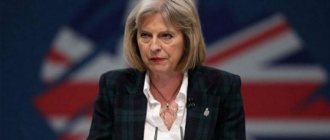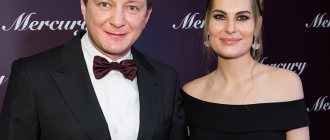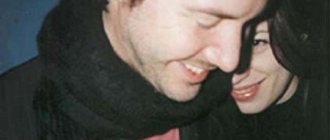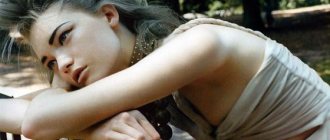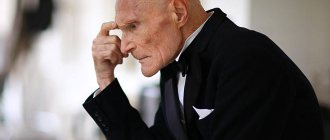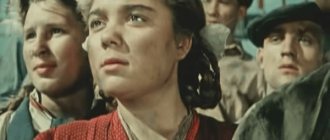Childhood and family of the future Queen of Great Britain
The biography of the English Queen Elizabeth 2 (then a princess) began on April 21, 1926. The baby was born in the Mayfair area of London, at the residence of the Earl of Strathmore on Brewton Street, by caesarean section. The area has now been rebuilt, and on the site of 17 Brewton Street there is a Chinese restaurant with a commemorative plaque on the wall. The event did not cause a stir at court, because no one could have imagined that the girl would eventually take the royal throne.
At first they wanted to name the baby Victoria. But the princess's father, after consulting with the reigning monarch, decided to name her Elizabeth Alexandra Maria. The baby's christening took place in the chapel at Buckingham Palace on May 29. The chapel was later destroyed during hostilities. Four years later, Elizabeth's sister Margaret was born.
At that time, Elizabeth II's grandfather George V reigned. The cousin of the last Russian emperor, Nicholas II, ruled the country for more than two decades, although he was also not preparing to become king. He was third in the chain of succession to the throne. George's older brother Albert Victor died during the influenza epidemic, and his father, Edward VIII, Queen Victoria's son, died in 1910.
It was George V who renamed the Sacken-Coburg-Gotha royal house into the House of Windsor. During the First World War he renounced all personal and family German titles. Little Elizabeth loved her grandfather very much, although by nature he was a tough and stern man, and in his upbringing he often went too far. The result was a stutter for Prince Albert, the king's second son, which he did not get rid of until the end of his life. But the king had the warmest feelings for his granddaughter.
George V died after a long illness in 1936 at the age of 70. Only 50 years later it became known that the life physician, on his own initiative, performed euthanasia when the king fell into a coma after severe bronchitis. His eldest son Edward was considered the heir to the throne, and the father of Elizabeth, who eventually became queen, was the king's second son, Prince Albert. In the biography of Queen Elizabeth 2 of England there was not yet a hint of a future as head of state.
After the sad event, the throne passed to Edward, but he never became king. He abdicated the throne of his own free will due to an unequal marriage with the American Wallis Simpson. Prince Albert became King George VI. He went down in history as a symbol of the British Empire's struggle against Nazi Germany. The reign of the monarch was marked by the establishment of the position of the dominions and their relationship with Great Britain. Thus, the monarch created the British Commonwealth and became king of all dominions.
Elizabeth II was 10 years old at the start of her father's reign. Henry's younger brother was declared heir to the throne because the king had no sons. But Henry refused such an honorable role in favor of Elizabeth. So the girl became the legal heir to the British throne at such a young age. But if at this time she had a younger brother, he would have inherited the throne.
Elizabeth received an excellent education at home. Teachers taught her manners, humanities, horse riding and many other disciplines that were necessary for the princess. She studied religion, art, history, and law. Many sources say that the girl was drawn to knowledge and even practically learned French on her own.
How Prince Philip calls Elizabeth II and other nicknames in the royal family
Photo: Reuters We may know them by their official titles, but within the walls of Buckingham Palace, the royals have their own funny nicknames for each other.
Elizabeth II
To the world, she is Her Majesty Elizabeth II, and her four-year-old grandson George may call her Geng-Gen. For Prince William, who couldn't say the word "granny" as a child, his grandmother was Gary. Elizabeth herself, when she was a child, changed her name to Tillabet, and only later did the family begin to call her Lilibet. Prince Philip lovingly calls Elizabeth Cabbage. The movie The Queen, starring Helen Mirren, even includes a scene at Scotland's Balmoral Castle in which the Duke of Edinburgh tells Her Majesty, "Move over, Cabbage," before going to bed. In The Crown, Edward VII teases Shirley Temple's young niece about her youth and stardom. According to rumors, Meghan Markle calls the Queen “Mum”, similar to how Princess Diana did it.
Prince Charles
Classmates affectionately (or not so affectionately) called Charles “Big Ears” and Dumbo, after the baby elephant from the Disney cartoon. To his first wife, Princess Diana, he was always Prince Charles or simply "Sire." Thanks to an interview on BBC radio last year, the whole world learned that Prince Harry simply calls his father “Pa.” And his wife Camilla often addresses her husband using the name Fred, which he invented 30 years ago for the purpose of conspiracy.
Camilla Parker Bowles
The prince himself called Camilla “Gladys” before the wedding, and in 2020, while communicating with Lady Gaga, the Duchess of Cornwall admitted that her grandchildren call her Gaga.
Prince William
At the university, the prince was listed as William Wales, and for greater anonymity, he generally preferred to be addressed as “Steve.” Princess Diana called her eldest son the marsupial mammal "Wombat". In an interview with NBC in 2007, William admitted that he still cannot get rid of this nickname. While visiting the Chelsea Flower Show in 2020, Kate Middleton publicly addressed her husband affectionately: “Baby.”
Kate Middleton
The prince responds to his wife in the same way, as follows from the SMS correspondence of the royal couple, which became public in 2006. William called his wife “Poppet” in public a couple of times. Her classmates called her Squeaky. “There were two guinea pigs at our school: one was named Pip, the other was Squeak. My sister Pippa was nicknamed Pip, and I, accordingly, was called Squeak (squeak - squeak translated from English - editor's note),” recalls Kate. Later, while studying at university, friends and journalists unanimously nicknamed Katherine Waity Katie (“Waiting Katie”) for obvious reasons.
Prince Harry
In terms of the number of nicknames and aliases, Prince Harry is in first place among British royals. To begin with, his official name is generally Henry, but the newly-crowned Duke of Sussex does not like to use it. “Spike Wells” was the pseudonym under which Prince Harry used Facebook for four years. According to his older brother, as a child Princess Diana called her youngest son Ginger (“Red”). In 2013, the prince told Canada's CTV National News that his friends call him "Potter." And in a recent interview with the BBC, Prince Charles called Harry a “darling boy.” Meghan Markle talks about her husband in the mold of Lady Di - “my prince.”
Meghan Markle
According to Megan herself, her mother called her Flower since childhood. Prince Harry refers to her briefly as Meg, but Prince Charles recently gave his daughter-in-law the more metallic nickname “Tungsten” (a chemical element that is a metal - editor’s note) for her “tough and unbending” character. By the way, it is worth recalling that the first name of the Duchess of Sussex is Rachel, like the main character of the film “Suits.”
Prince George
Since infancy, the little prince has been called PG (Pee Gee) - an abbreviation for his title and name. Kate Middleton added the prefix Tips to this nickname, and it became the name of the popular tea brand PG Tips. Prince Charles affectionately calls his grandson Georgie.
Maria Razumova
Elizabeth II during the Second World War
A courageous and conscientious girl beyond her years appeared before the people of Great Britain during the Second World War. The biography of Elizabeth II began to resemble the life story of a member of the monarch's family. In 1940, at the age of 14, she spoke on the radio with an appeal to children who suffered during the war. And Elizabeth’s first independent appearance in public dates back to 1943. Then the girl visited the regiment of Guards Grenadiers.
At the age of 18, the girl became one of the five advisers - a person who has the right to perform the functions of the monarch in the event of his incapacity or absence. In 1945, changes occurred in the biography of Queen Elizabeth 2 of England (then Crown Princess): she joined a self-defense unit and, together with other girls, was trained as an ambulance driver.
The girl received the military rank of lieutenant. The biography of Elizabeth II during the war was connected with the front. The girl's military service lasted five months. She became the first woman from the British royal family to serve in the army. The future husband of Elizabeth 2, Philip, whose biography was connected with the navy, also served at the front in those years.
Elizabeth II - biography
Oldest monarch of the United Kingdom
Queen Elizabeth II, a representative of the Windsor dynasty, was born on April 21, 1926 in London. She heads the British Commonwealth of Nations, the Anglican Church and is the queen not only of Great Britain, but also of 15 countries: Saint Vincent and the Grenadines, Australia, New Zealand, Antigua and Barbuda, the Bahamas, Jamaica, Barbados, Canada, Belize, Grenada, Papua - New Guinea, Tuvalu, Saint Kitts and Nevis, Saint Lucia, Solomon Islands.
Elizabeth II was the eldest daughter of Lady Elizabeth Bowes-Lyon and her husband, Prince Albert of York (later King George VI). The Queen's full name is Elizabeth Alexandra Mary, in honor of her mother, great-grandmother and grandmother. Elizabeth's only younger sister, Princess Margaret, was born in 1930.
She unexpectedly became the heir to the throne
The christening of the future Queen Elizabeth II took place on May 25, 1926. The girl studied at home in the humanities, paying special attention to law, religion, art history and French. Even in childhood, the main hobby in the biography of Elizabeth II arose - horse riding (the Princess of York was very fond of horses).
Nobody considered the princess as an heir to the throne: she was third in line to the throne. The first was Edward of Wales, then his brother, Elizabeth's father. If Edward had not abdicated the throne (11 months after the death of George V, to marry a divorced woman), his potential children would have been ahead of Elizabeth II. However, Edward chose love, and the throne was taken by George VI, who moved with his family to Buckingham Palace.
And here Elizabeth II was helped by another accident: her parents had no more children (but if a son had been born, he would have become king). The story of George VI's rise to the throne was resurrected in the Oscar-winning film The King's Speech.
Lieutenant and ambulance driver
At the age of 14, the heir to the throne addressed the nation for the first time on the radio - with consolation to children suffering from the Second World War. And in 1944, Elizabeth was appointed State Counselor (there were five of them, people who were entrusted with the functions of the monarch in his absence).
Elizabeth II was very active in her youth; even before the end of the war, she trained in the women's self-defense unit and became a lieutenant and an ambulance driver. The princess served in military service for 5 months.
She traveled around the country and the world with her parents, and in 1947 she went with them to South Africa, at which time she swore an oath to her compatriots to serve the empire (via radio) - on her 21st birthday. After the death of George VI due to illness (February 6, 1952), Elizabeth II became queen. Her coronation did not take place immediately, but only on June 2, 1953 in Westminster Abbey.
The reign of Elizabeth II began with travel
The royal biography of Elizabeth II began with visits: for six months she got acquainted with the colonies and other states, including visiting Australia and New Zealand (before her, the British monarch had never set foot on the territory of these distant countries).
The first fateful decision in the biography of Elizabeth II was the appointment of the head of government - in 1957, by her decree, Harold MacMillan received this position. The Queen later visited the USA and Canada and spoke at the UN. And on December 25 of the same year, citizens watched Queen Elizabeth II’s Christmas greetings on television.
Not exactly a decorative figure, but still...
It should be understood that the monarch of the United Kingdom is largely a “decorative” figure; she has almost no influence on politics. However, when performing representative functions, making trips, visits, taking part in high-level meetings, traditional tea parties, and charity balls, Queen Elizabeth superbly supports the authority of the British monarchy (however, Elizabeth II never gives any interviews).
And, of course, the “matriarch” always “kept her finger on the pulse” and vigilantly monitored (and monitors) the order in the royal family. And every Tuesday the Queen meets with the Prime Minister to discuss the situation in the country.
The role of the "Bond girl"
In 1976, Queen Elizabeth II of Great Britain opened the Olympics in Montreal, Canada (as the country's monarch).
And in 2012, she took part in the opening ceremony of the anniversary XXX Olympic Games in London. For her “role” in this amazing show (Elizabeth II performed a cameo with Daniel Craig https://fancy-journal.com/celebrities/vsjo-o-znamenitostyakh/8916-deniel-krejg-biografiya-i-lichnaya-zhizn -Bond ) the Queen was awarded the BAFTA.
Charles's marriage and tragic events
In 1981, while taking part in the traditional military parade on the “official birthday” of Elizabeth II, the queen survived the only attempt on her life - fortunately, unsuccessful. This year turned out to be fateful for Prince Charles - he married Diana Spencer.
Later, the relationship between daughter-in-law and mother-in-law would become legendary: friction was inevitable, both were strong personalities, no one wanted to give in, and the head of the royal family insisted on strict adherence to protocol. Moreover, the relationship between the prince and princess almost immediately became far from ideal.
In 1992, Charles separated from his wife, in 1996 they divorced (the Queen insisted), and when a year later Diana died in Paris, it became a national tragedy. The tabloids accused Elizabeth II of “conspiring” against the princess and built unimaginable versions, but the queen seemed numb to what had happened and did not want to communicate with the press. Only Prime Minister Tony Blair managed to “get through” to the monarch. These events are depicted in the biopic “The Queen” (the title role earned Helen Mirren an Oscar).
Golden and Diamond Jubilees
The Golden Jubilee (50th anniversary of the reign of Queen Elizabeth II) was celebrated with great fanfare. In the same year of 2002, sad events awaited her - the death of her younger sister and the Queen Mother.
In 2012, the “Diamond Jubilee” of his tenure on the throne took place, the peak of which occurred on June 3-4. A year later, it became clear that Elizabeth II intended to gradually transfer her responsibilities to her son Charles: for the first time, the Queen did not go to the British Commonwealth summit (the events took place too far, in Sri Lanka, and flights are unsafe for an elderly woman).
The monarchy earns “points” and millions largely thanks to the queen
Elizabeth II's contribution to the popularization of the British monarchy can hardly be overestimated. Although there are those who believe that supporting the royal family is too expensive, everyone follows the events in the palace using social networks and the official website of the royal court.
Moreover, in addition to expenses, there are also incomes: it is estimated that the monarchy attracts tourists and “earns” the state budget about 500 million pounds sterling (every year). The Queen herself patronizes more than 600 charities.
The longest marriage in the history of the monarchy
Since childhood, the girl wanted to marry a farmer, but the biography of Elizabeth 2’s husband was not related to agriculture. The girl had an iron character, so her parents’ plans to marry her to a noble young man were in jeopardy. But in the end, the girl abandoned this idea because a sailor cadet attracted her attention. By the way, according to the royal family, it was not much better than a farmer.
Cadet Philip was of no interest to Elizabeth’s family, although he was distinguished by noble origin. The young man was the only son of six children of King George I of Greece, and at birth had the title of Prince of Denmark and Greece. Philip is the great-grandson of Queen Victoria and the last Emperor of the Russian Empire, Nicholas II. After the abdication of the Greek king Constantine, the family moved to France, and little Philip was sent to London to live with relatives.
The young people met at one of the family dinners. Then Elizabeth was only 13 years old, and the young prince was 18. The biography of Elizabeth 2 (the future queen of England) began to change. The girl actively took part in social events, because in the future she was destined to become a monarch. And the meeting with the prince marked the beginning of the love story of her life.
It is believed that during the war, when the young man wrote tender and passionate letters to his beloved from the front, his terminally ill father asked for Elizabeth’s hand in marriage from George VI, but was refused. The groom's family became impoverished, and during the war they almost completely sided with the Nazis, because Philip's sisters married German officers.
During the war, other candidates for marriage with the princess disappeared somewhere: some got married, others decided to continue their search. Only Philip remained. They say that Elizabeth herself proposed marriage to Philip. The parents were not happy with this decision, but were forced to agree to the marriage.
The engagement was officially announced in the summer of 1947. The wedding was planned for November. The wedding took place in Westminster. The groom was allowed to invite only his mother to the wedding, who had been seriously ill for several years. The bride was escorted to the altar by her father. Elizabeth chose a champagne-colored satin wedding dress, which was embroidered with pearl and crystal beads. It took the court designer several months to create this outfit.
After the marriage, the young couple led an active social life. They often appeared at social events. Elizabeth showed an iron character, and the romantic prince even fell in love with singer Pat Kirkwood, but Philip was always devoted to his queen. Elizabeth did everything to stop the rumors. Very soon she gave birth to her first child, and then the couple left for the Philippines. Philip was sent there on duty.
She was jealous of her younger sister and did not allow her to marry for love
Still from the series “The Crown” (2019)
Elizabeth’s younger sister, Margaret, was always more beautiful and had a light, cheerful disposition, for which everyone loved her. A worm of envy towards her sister settled in Elizabeth’s heart.
And when Margaret fell in love with the brilliant Captain Peter Townsend, a British hero, Queen Elizabeth did not allow her sister to marry him - under the pretext that he was divorced and that he had children from a previous marriage.
Although, already queen, Elizabeth could well have made changes to the relevant laws and helped her sister arrange her personal life. But she did not condescend to do this, despite all the prayers and tears of her sister.
Out of grief, Margaret went to travel, not disdaining dubious companies. She started smoking, drank whiskey, and after a while, having learned that her lover had married someone else, she hurried to marry the first one she came across - a poor photographer. However, 18 years later Margaret divorced him. She lived to be 72 years old, spent her last years in a wheelchair, and felt unhappy all her life.
Accession to the throne of Queen Elizabeth II
In early 1952, the royal couple went on a visit to the Commonwealth countries, but the trip was interrupted by the death of the king. He was diagnosed with lung cancer, but the man died from thrombosis. Newspapers reported that he was in normal health the previous evening.
Then Elizabeth and her husband were on vacation in Kenya. Philip was the first to hear the news. He became the first to bend the knee and take an oath to the queen. The Queen was then in despair. A dispute broke out that the ruling house should now be the House of Mountbatten, where Philip came from, rather than the House of Windsor. But on the advice of Winston Churchill, the girl refused to take her husband’s surname.
The biography of Elizabeth II has changed. The coronation took place in June 1953. The event was broadcast on central television in many countries around the world. The ceremony brought together thousands of people in front of their television screens and contributed to the popularization of television. This day should be to change the destiny of the country. Twenty-seven-year-old Elizabeth Windsor was preparing for her coronation at Buckingham Palace.
A new page began in the biography of Elizabeth II of England on this day. It was expected that the girl would be crowned with a crown created for Queen Victoria. But she insisted on wearing the traditional St Edward's crown, which weighed more than three kilograms. Her father and grandfather wore this crown only for a few hours during the coronation, while Elizabeth II turned out to be the first royal person who did not remove the sign of power throughout the entire ceremony.
The design of Elizabeth's coronation dress remained a secret for a long time. The white satin outfit, decorated with pearls, diamonds and amethysts, was supposed to look especially impressive in the spotlight. The skirt featured the emblems of Great Britain and the Commonwealth countries.
There was almost an embarrassment with this detail. The Royal Tailor mistakenly painted the daffodil as the emblem of Wales. The officials insisted that the dress have a leek (this is a real emblem). The tailor refined the leek based on the traditions of military uniforms. The Queen called the dress magnificent.
Elizabeth's rehearsals were not in vain. During the ceremony, she forgot to make only one curtsey, while many mistakes were made during her father's accession to the throne. As the queen moved towards the exit of the abbey, her pages blocked her. The BBC producer decided to do a close-up, although the media were warned in advance that there should be no close-ups.
Second half of the fifties - early nineties
A short biography of Elizabeth 2 usually includes a dry listing of the events and actions of the monarch in office, but only the most important facts are really worth mentioning. In 1956, Elizabeth received Nikita Khrushchev and the Chairman of the Council of Ministers of the USSR at Buckingham Palace. Following the meeting, the leaders of the Soviet state presented the queen with a horse with decorations, a painting by Aivazovsky, a sable cape, and a box with a portrait of the royal family. Prince Philip received as a gift a set of wines, a Tula samovar, a painting and a box with a portrait of his wife. Little Charles was given a horse with decorations, a set of illustrated children's books by Soviet authors and a set of sweets. Princess Anne was even given a three-month-old teddy bear.
That same year, Elizabeth met Marilyn Monroe at the Empire Theater in London. In the fall, the Olympic Games took place, the opening ceremony of which was presided over by the queen's husband. In 1957, Queen Elizabeth II had to choose the head of government. Harold Maxillan, who was 63 years old at the time, was appointed to the post. In May of the same year, the Queen received Eleanor Roosevelt, and in October she made visits to Canada and the United States. Elizabeth II also became the first monarch to wish her subjects a Merry Christmas on television.
In 1960, the couple's second son, Prince Andrew, was born. He became the first child in the last century to be born to a reigning monarch. The following year the Queen continued her active travels. She visited Nepal, Pakistan, Vatican City, Ghana, Cyprus, India, Turkey, Iran and Italy.
At the same time, a new page began in the biography of Elizabeth 2’s sister, Margaret. The girl married a descendant of a Welsh noble family. Margaret was repeatedly called the "rebel princess". She often appeared in the company of rockers, visited London clubs and constantly had affairs. Since the eighties, she has had health problems and an addiction to alcohol and smoking. The biography of Elizabeth 2's sister Margaret ended tragically in 2002. She died of a stroke.
In the summer of 1961, the Queen received the Kennedys, and in 1962, only Jacqueline, who went on tour on behalf of her husband. In 1965, members of the Kennedy family, together with Elizabeth, would open a number of memorial sites in the UK dedicated to the memory of John F. Kennedy.
In the summer of 1961, Elizabeth met the world's first astronaut. A lunch was held in honor of Yuri Gagarin, which was attended by the royal couple, their children, as well as the Queen's sister and Prince Philip's uncle. In 1969, the first man to land on the moon, American Neil Armstrong, was received at Buckingham Palace.
In March 1964, the last child of Elizabeth II was born. Prince Edward will later abandon the traditional military career for boys born into the royal family. He will pursue a liberal arts degree and work for theater production companies.
In 1970, the biography of Queen Elizabeth II of England was replenished with new diplomatic meetings and visits. She met with American President Richard Nixon and traveled to New Zealand and Australia. During the journey, a new practice of communicating with subjects was introduced. The couple walked the streets and talked with a huge number of people.
The following year, the Japanese Emperor was received in Great Britain, and in mid-1972 the couple and their daughter Anna visited socialist Yugoslavia. There they met with Josip Broz Tito. In September of the following year, the queen's husband made an unofficial visit to the USSR. He met with Leonid Brezhnev, Alexei Kosygin and Nikolai Podgorny. Philip arrived in Moscow as president of the International Equestrian Federation.
In 1974, a crisis began to brew in Great Britain. This required intervention on the part of the queen. No single political party received a majority of the votes, but the result was that Harold Wilson was appointed Prime Minister.
In 1975, Elizabeth became the first British monarch to pay an official visit to Japan; two years later she inaugurated the Olympic Games and received American President Jimmy Carter. In 1978, the leader of socialist Romania and his wife Elena visited the UK. In 1980, Elizabeth met with the Pope at the Vatican. In 1982, the Pope visited Great Britain in person (for the first time in 450 years).
In 1986, the Queen learned of civil war in the colony of Aden. At that moment she was on her yacht Britannia. Elizabeth II decided to enter territorial waters and took on board more than a thousand evacuees.
Gay relatives
Despite legal prohibitions against homosexuality, in England at the beginning of the twentieth century, closed clubs for gays were opened every now and then. A fairly frequent visitor to such a club was Elizabeth II’s uncle, Prince George, Duke of Kent.
It was rumored that he was close to one of his relatives, Edward VIII. In addition, the list of George's alleged lovers included names such as Louis Ferdinand - the Prussian prince, Anthony Blunt - the Soviet spy, the famous writer Noel Coward and many others.
Queen Elizabeth II. Source - wikipedia.org
Today, such inclinations will not surprise anyone - they are even flaunted by famous people. However, such behavior has always been unacceptable for members of the royal family and remains so to this day.
The current monarch is obliged to strictly monitor this and not allow his relatives to demonstrate forbidden inclinations. Otherwise, the monarch may even be overthrown as having failed in his duties. After all, the royal family should be ideal and serve as an example for its subjects.
The reign of Elizabeth II in the late 90s and early 2000s
According to the Queen herself, 1992 was a “terrible year.” In the biography of Queen Elizabeth II of Great Britain, then, indeed, new sad pages appeared. Princess Anne was going through a divorce from her husband, Princes Andrew and Charles also separated from their lovers, but at that time still unofficially. That same year, Windsor Castle was badly damaged by fire, funding for the court was reduced, and the queen began to be required to pay income taxes.
In 1995, the Queen visited Russia on an official visit, and the following year received Bill Clinton and his wife at Buckingham Palace. At the same time, the divorce of Princess Diana and Prince Charles was officially announced. A year later, the princess died tragically in a car accident. This came as a shock to the ruling family and ordinary citizens.
Personal life of Elizabeth II
Married for love
Elizabeth II got married early - at 21. Her husband was the great-great-grandson of Queen Victoria, a representative of the Greek and Danish royal families, Philip Mountbatten, who is 5 years older than his wife. The wedding took place in 1947, the newlyweds had known each other for a long time - since 1934. By marrying the princess, Philip became Duke of Edinburgh.
The first-born of the future Queen Elizabeth II, Prince Charles, was born in 1948. In 1950, Elizabeth’s only daughter, Anna, was born. Ten years later, the family grew again and Prince Andrew was born. The Queen's youngest son, Prince Edward, was born in 1964.
Rich Grandmother and Great Grandmother
Queen Elizabeth II of Great Britain has four grandchildren (Prince William, Prince Harry, Peter Phillips, Anne's son, and Viscount James, Edward's son). She also has four granddaughters: Zara Phillips (Anne's daughter), the Duchess of York Beatrice and Eugenie (Andrew's daughters) and Lady Louise Windsor (Edward's daughter).
William and his wife Kate Middleton gave their grandmother a great-grandson, George, and a great-granddaughter, Charlotte. Peter Phillips has two children, Savannah and Elizabeth, and Zara has a daughter, Mia Grace.
Style icon
Elizabeth II is, one might say, a style icon. Her hats are legendary and her costumes and jewelry are impeccable. Queen Elizabeth II loved to travel in her youth, visiting more than 130 countries and making about 325 foreign trips. Her Majesty has always been interested not only in horses, but also in dogs (her favorites are corgis, Labradors and spaniels), as well as photography and (in her old age) she fell in love with gardening.
The Queen's fiftieth anniversary on the throne
Ceremonial events marking Elizabeth's fifty years on the throne were held in 2002. This is the golden anniversary. Unfortunately, Elizabeth's sister Princess Margaret died that same year. The biography of the mother of Queen Elizabeth 2 was tragically interrupted in the same year. Queen Mother Elizabeth Bowes-Lyon died at 101 from a severe cold. All of England took this hard. The biography of Elizabeth 2 continued. In 2007, she became the first royal to celebrate a diamond wedding (sixty years of marriage) and the oldest British monarch in history.
First years of reign
The British Queen Elizabeth 2 traveled a lot in her youth. She did not abandon this habit from the first days of her reign. With her accession to the throne, the ruler visited the countries that were part of the Commonwealth of British Colonies. In the 50s and 60s, the process of granting independence to these states, located in all parts of the world, began. Most of them were in Africa. In addition, for the first time in history, a British monarch visited Australia and New Zealand. This person turned out to be Queen Elizabeth 2. The ruler’s fascinating biography was superimposed on her unique status, which attracted the attention of the whole world to her person.
The queen did not forget about internal affairs in her homeland. She regularly met with parliamentary representatives and discussed the agenda. In 1957, the first political crisis broke out in the ruling party during its time on the throne. Back then they were conservatives. Prime Minister Anthony Eden resigned. Since the party did not have established mechanisms for electing its leader, the queen had to take responsibility into her own hands.
In her first steps in power, Elizabeth often consulted with the legendary Winston Churchill. After consultations with the venerable politician, it was decided to propose the candidacy of Harold Macmillan, which was accepted. He became the 65th Prime Minister of Great Britain from 1957 to 1964.
Queen Elizabeth's Diamond Jubilee
The Diamond Jubilee was celebrated in 2012 in the UK and Commonwealth countries. Today, the queen rules sixteen states (twelve of them were dominions at the time of Elizabeth's coronation). Elizabeth became the second British monarch to celebrate this anniversary. The first was Queen Victoria. Many celebratory events were planned. Parliament, as an anniversary gift, invited the Queen to attend the meeting as an observer. This happened for the first time.
Role in political and social life
It seems that the biography of Queen Elizabeth 2 of England (and the photos confirm this) is only receptions, visits and participation in social events. This is partly true. Elizabeth performs exclusively representative functions and has virtually no visible influence on state affairs. But throughout the entire period of her reign, she quite strengthens the authority of the monarchy. The Queen's duties include visiting different countries, meeting high-ranking guests, reading annual messages to ministers, knighting, presenting awards and receiving ambassadors. Every day, Elizabeth II watches the news and personally responds to several random letters that her subjects send to her in huge quantities.
Modern status of the queen
The eventful biography of Queen Elizabeth 2 of England is an example of the life of a monarch who, over the years, increasingly renounced his former privileges and became a state figure performing representative functions. Today, the ruler continues to follow the traditions of her tenure on the throne. Once a year she organizes a speech before parliament.
The Queen also regularly meets ambassadors and diplomatic delegations. In previous years, she often traveled to various parts of the planet, but with age, the intensity of travel decreased. However, most recently, in 2011, Elizabeth went to Ireland. It was a historic visit. Great Britain and its western neighbor have been in conflict for centuries. In the 20th century, the Irish struggle for independence (including in Northern Ireland) took the form of terrorist attacks, which Elizabeth 2 herself witnessed. England, however, overcame this crisis and improved relations with Dublin.
Over the decades on the throne, the ruler has acquired her own style in dealing with parliament. As a rule, she tries to stay away from political fights between parties and supporters of different programs.
But it was the cold-blooded and unapproachable queen who had to make important decisions when crises occurred in parliament. For example, this happened in 1957 and 1963. In both cases, the prime minister resigned, and the ruling party could not decide on a successor. Then the queen herself chose the speaker of parliament. Each time this helped defuse the situation in Downing Street.
Today in Great Britain, every resident of the country knows about everything that Queen Elizabeth 2 of England is connected with. The biography, full name and other facts from her life are well known to everyone. She managed, despite the changeability of the modern era, to maintain the authority of the monarchy.
Family and succession to the throne
In short, the biography of Queen Elizabeth 2 of England throughout her life was focused on maintaining the authority of the monarchy and performing representative functions. At the same time, she managed to give birth to two children while on the throne. In total, Queen Elizabeth II and her husband, Prince Philip, have four children: Charles, Anne, Andrew, Edward. The Queen has nine grandchildren and seven great-grandchildren. First in line of succession is Charles, followed by his son, Prince William, and his grandchildren (George, Charlotte, Louis).
The biography of the daughter of Elizabeth 2 is of some interest. Princess Anne survived several assassination attempts; she serves as a member of the royal house of Britain. After graduating from school, the royal princess constantly organized meetings and participated in several funds to help those in need. The daughter of Queen Elizabeth II visited Russia more often than other members of the royal seven. She officially represented her state at the Olympic Games in the Russian Federation.
Heir to the throne
The early biography of Queen Elizabeth 2 of England was consistent with her status as Princess of York. She lived with her parents in Kensington. One of her main hobbies since childhood was horse riding. The queen was faithful to this hobby throughout her youth. At the same time, the girl was taught a full range of sciences. Wide-ranging knowledge was a mandatory attribute for members of the Windsor dynasty, as they personified the best that the monarchy could give to the state. Particular emphasis in Elizabeth's education was placed on the humanities: religious studies, jurisprudence and art history. The child showed a remarkable interest in the French language, which was encouraged by the teachers.
The biography of Elizabeth 2 took a sharp turn when she became the heir of her father, the king. She and her parents moved to Buckingham Palace. Three years later, World War II began, and the carefree life ended with the first salvos of German guns on the continent.
Great Britain supported Poland and, together with its main ally France, declared war on the Third Reich. Despite the fact that the main political decisions were made by the government and parliament, the royal family became an important symbol of the unity of the nation against the growing Nazi threat. As a child, Elizabeth 2 faced completely unchildish dangers and experiences that all her peers had to endure.
